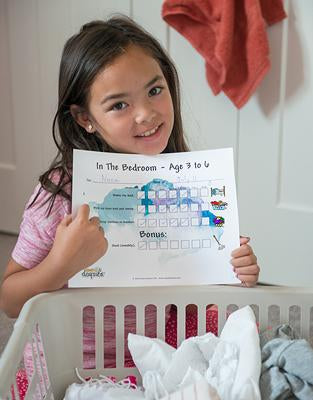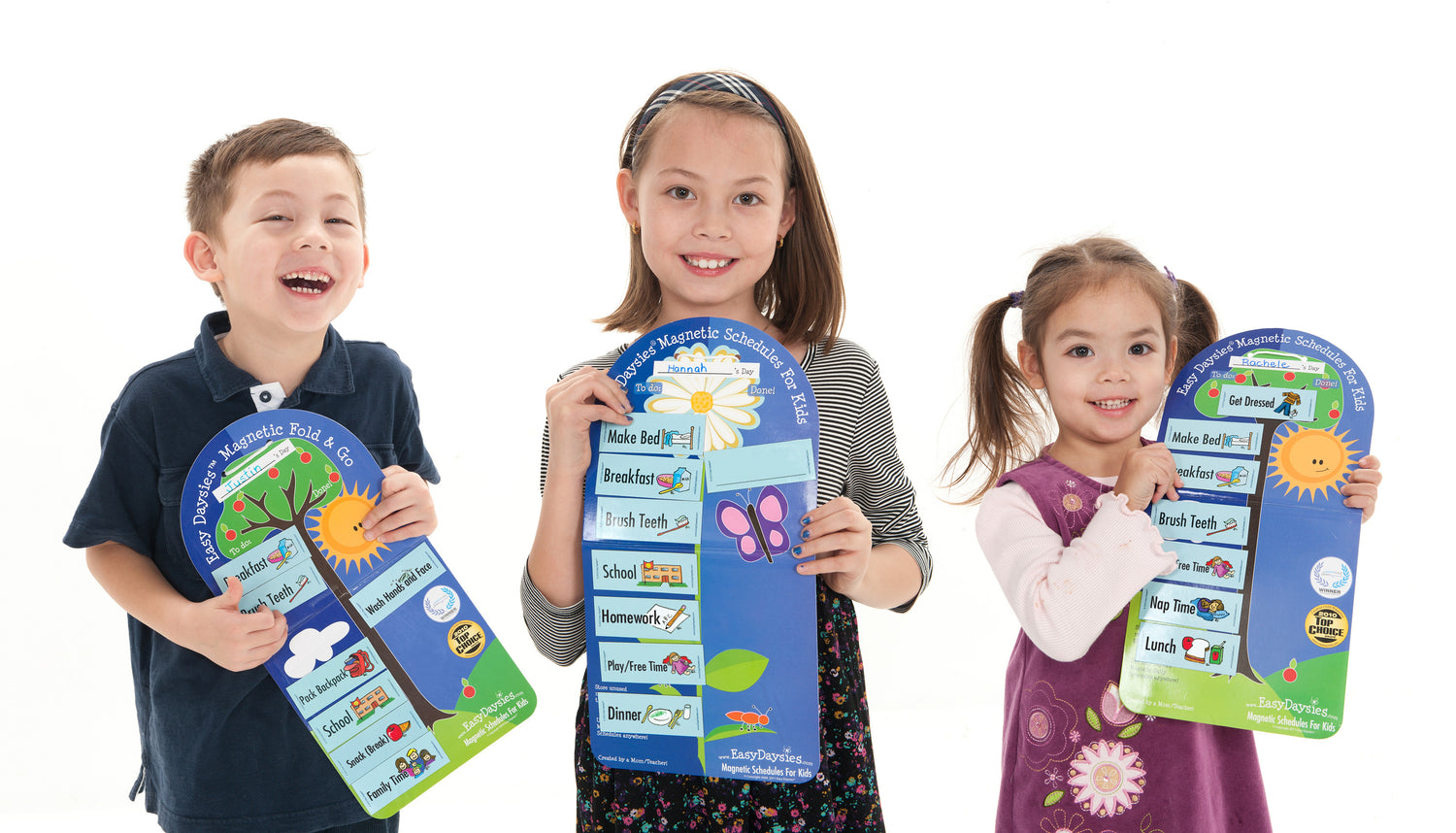 Being a part of the family means each person contributes to its happiness, livelihood and its success. Chore charts can help – if done right!
Being a part of the family means each person contributes to its happiness, livelihood and its success. Chore charts can help – if done right!
Doing chores is a natural part of being a family. It is also part of being an adult, so the earlier your children become accustomed to chores, the better they are set to be successful as adults, and the less likely you are to have unnecessary and exhausting battles with older children.
When children start helping out at a young age, there will not be any need of convincing, bribing, yelling matches, or payoffs when they are tweens or teens. I have heard several times that ages five to twelve are the golden ages to teach children to do chores, inside and outside of the house.
Chores teach children so many life skills: socially, ethically, and personally. It is important for children to realize the importance of each person’s contribution in the world and it begins at home, where they can realize their own part in the big picture!
Children learn responsibility, satisfaction of a job well done, rewards and consequences, all from sharing chores around the house.
Doing chores does not have to be the bane of anyone’s existence when the child realizes the importance and the valuable role they play.
Doing chores can start as young as three years old because everyone needs to feel needed and to know that they are making a contribution. Sound mean? On the contrary, if we assign age appropriate chores in order to best teach our children.
Before we start with expectations for your child (and their own chore charts), there are some expectations for parents to reflect on:
1. Be specific with instructions and demonstrate.
Appreciate the effort rather than expecting perfection. Relax and appreciate that your child is putting the effort into help clean or tidy up the home. Avoid jumping in and taking over, especially interrupting and “bossing”, because that will lead to them feeling that they can’t do it and they may be afraid to try next time. Rather, the first time, show them how it is done and guide. Praise them when they have their turn.
2. Be consistent with follow through.
Once your child starts a task, have them complete it, otherwise they will think it is okay to do a partial job and that you will finish it for them. That is definitely not what you want. For example, have them consistently bring their cup or dishes to the sink or load in the dishwasher when finished meals, so that they will also do this when they are at another person’s house.
3. Start young!
Your kids are very capable and they love help at a very young age. Do not wait until they are older because it will be harder to convince them that chores are just a part of being a family. When kids start helping out at a young age, you are helping establish good habits. Plus, they will learn by doing. A child as young as 3 can put a spoon or fork next to each plate when setting the table or can bring their plate or bowl or cup to the sink after a meal. They would love that! And you will love that when they are older too!
4. Praise and appreciate as the chore is being done rather than waiting until it is completed.
The praise will be rewarding and cheering will be a motivator for your child. Kids love being noticed by their parents for their efforts. Just like when a child is riding a bike, doing a somersault, or jumping into a pool, you hear a him or her say, “Mom! Watch this! Dad! Watch me!” They appreciate the same “affirmation” and “applause” when they are doing a chore. Feel free to say, “[Name of Child], thank you for bringing your plate to the sink and rinsing it! You are awesome!” “What a great helper you are!”
5. Make it easy for your kids (with preparation and chore charts).
Create a personalized cleaning bin or basket for each child. This is fun for them and gives them ownership in the tasks. This bin could include their own spray bottle that you can pick up at the dollar store, filled with child safe cleaning solution, a cloth for wiping and a duster wand. Now they will have all the supplies they need and no time wasted searching or excuses of not knowing what to use.
6. Use visual chore charts or visual daily reminders.
Kids transition into events easier when they know what is happening next. A visual indicator will allow them to know when they are expected to do the chore and what you need them to do. Get ready to start with easy to follow, age appropriate chore charts now!
The post Age Appropriate Chore Charts – Why and How appeared first on Easy Daysies - Magnetic Schedules for Families.





